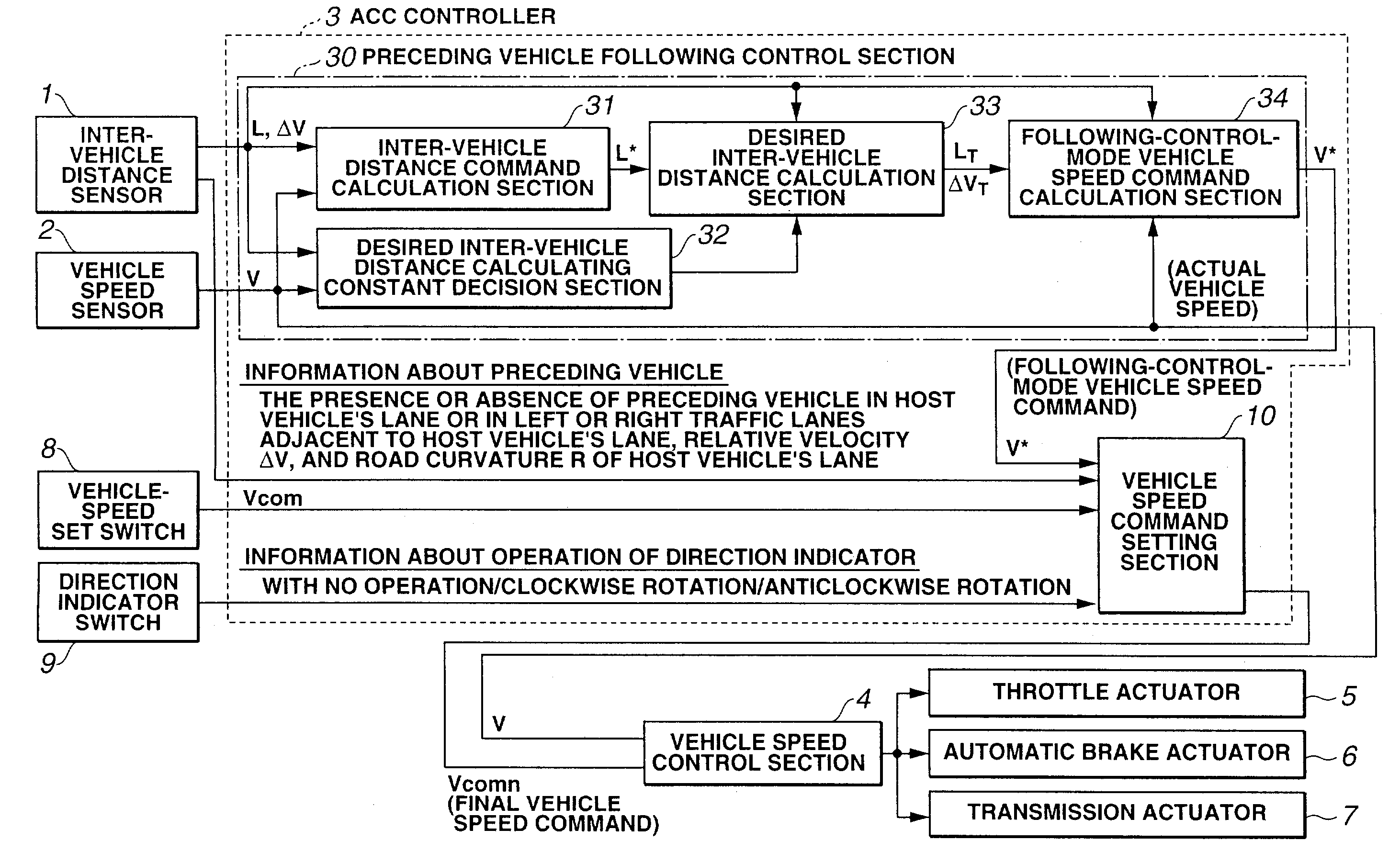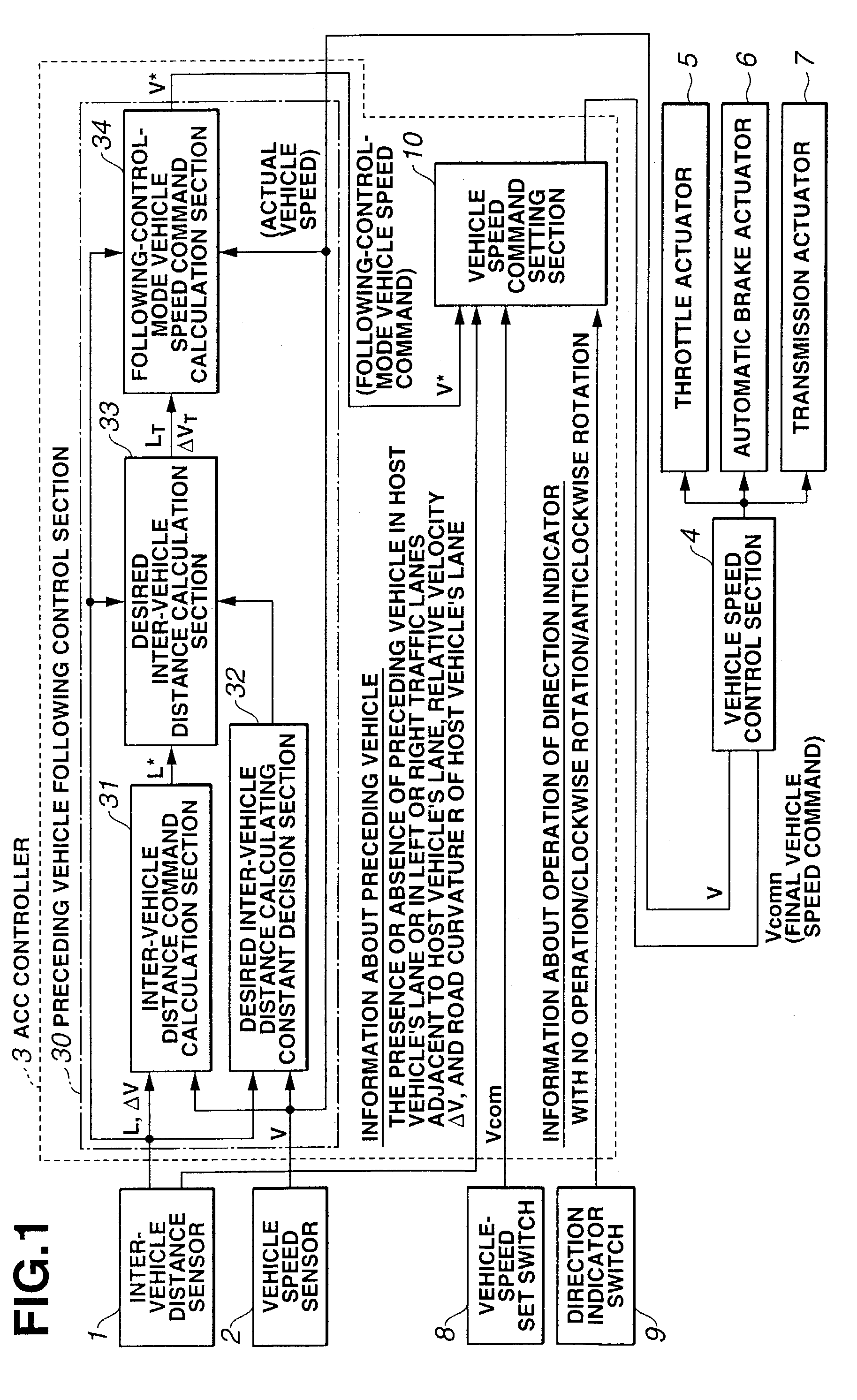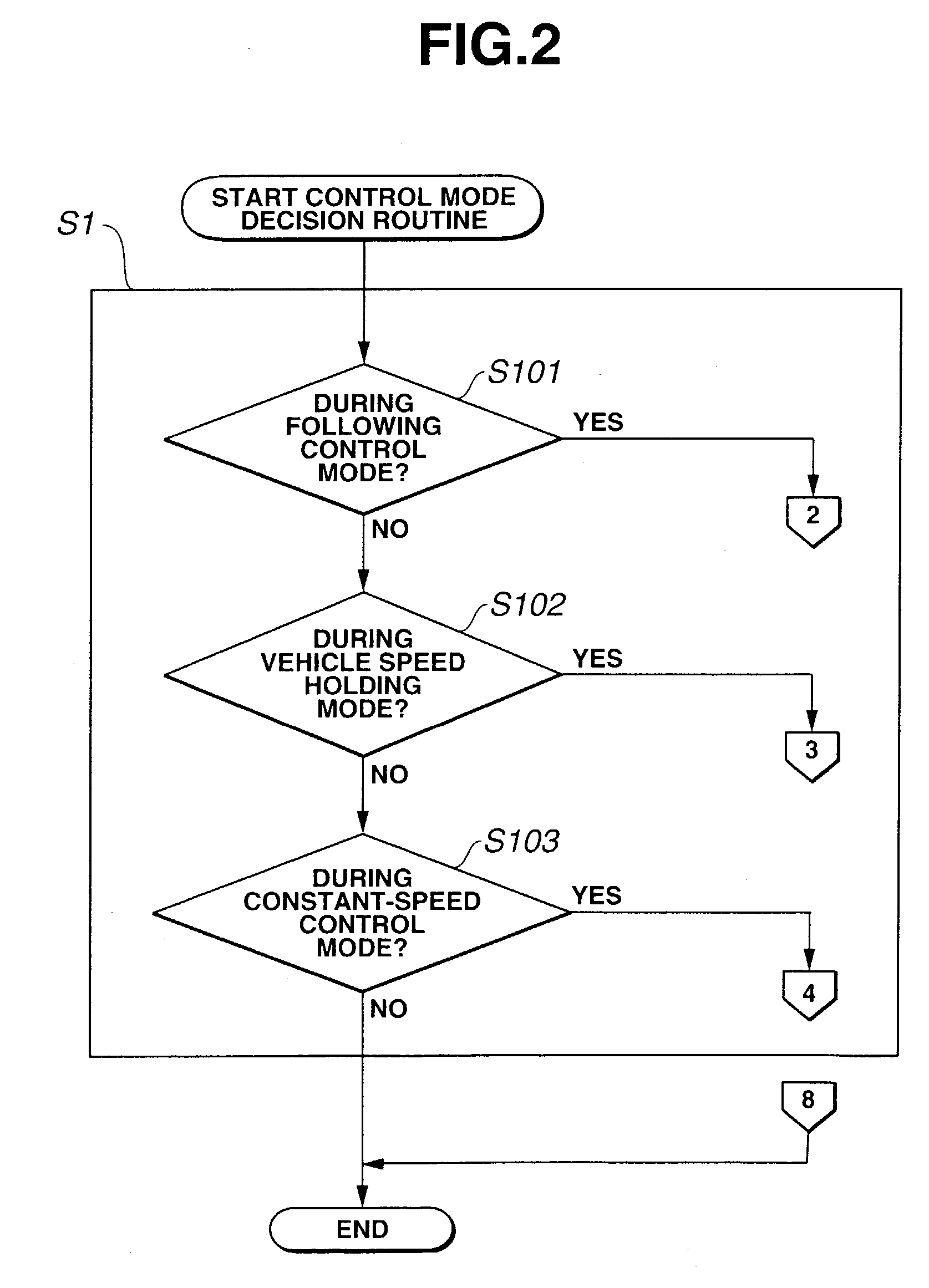Adaptive cruise control system
a technology of cruise control and adaptive vehicle, which is applied in the direction of process control, process control, pedestrian/occupant safety arrangement, etc., can solve the problems of deteriorating vehicle driveability, fixed host vehicle speed, etc., and achieve enhanced vehicle driveability, better passing ability, and better acceleration feel.
- Summary
- Abstract
- Description
- Claims
- Application Information
AI Technical Summary
Benefits of technology
Problems solved by technology
Method used
Image
Examples
Embodiment Construction
[0017]Referring now to the drawings, particularly to FIG. 1, the adaptive cruise control (ACC) system of the embodiment is exemplified in an automatic speed control system capable of performing transmission ratio control, engine control and brake control, for controlling the host vehicle's speed and the host vehicle's distance from a preceding vehicle, often called an “inter-vehicle distance” or a “vehicle-to-vehicle distance”. As shown in FIG. 1, an automatic following controller or an adaptive vehicle speed control ECU (ACC controller) 3 generally comprises a microcomputer. ACC controller 3 includes an input / output interface (I / O), memories (RAM, ROM), and a microprocessor or a central processing unit (CPU). The input / output interface (I / O) of ACC controller 3 receives input information from various engine / vehicle switches and sensors, namely an inter-vehicle distance sensor (or an object detector) 1, a vehicle speed sensor 2, a vehicle-speed set switch (simply, a set switch) 8, a...
PUM
 Login to View More
Login to View More Abstract
Description
Claims
Application Information
 Login to View More
Login to View More - R&D
- Intellectual Property
- Life Sciences
- Materials
- Tech Scout
- Unparalleled Data Quality
- Higher Quality Content
- 60% Fewer Hallucinations
Browse by: Latest US Patents, China's latest patents, Technical Efficacy Thesaurus, Application Domain, Technology Topic, Popular Technical Reports.
© 2025 PatSnap. All rights reserved.Legal|Privacy policy|Modern Slavery Act Transparency Statement|Sitemap|About US| Contact US: help@patsnap.com



